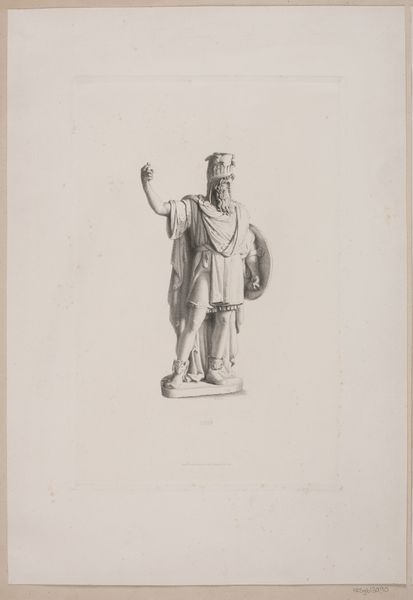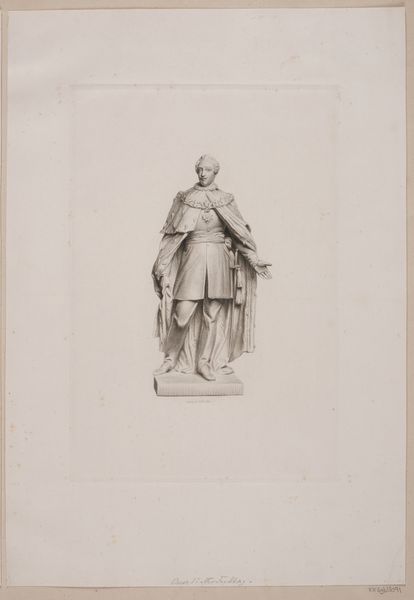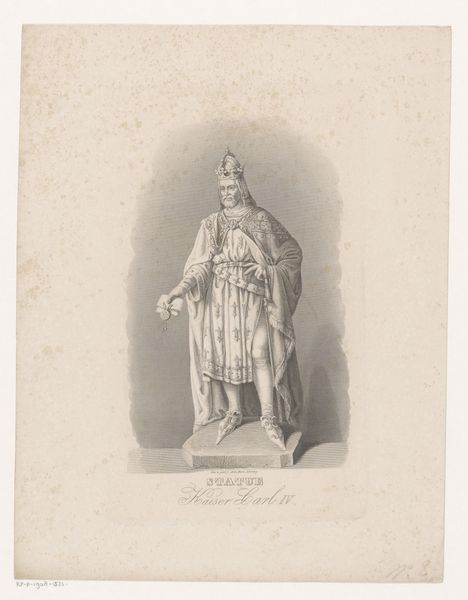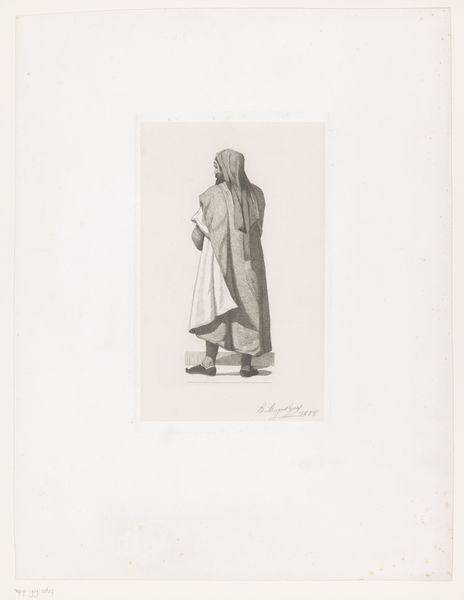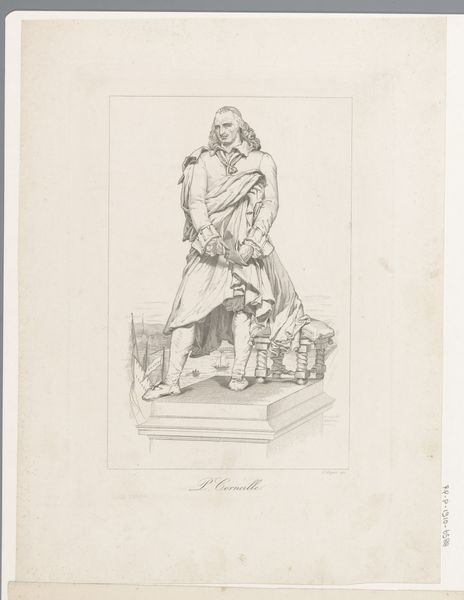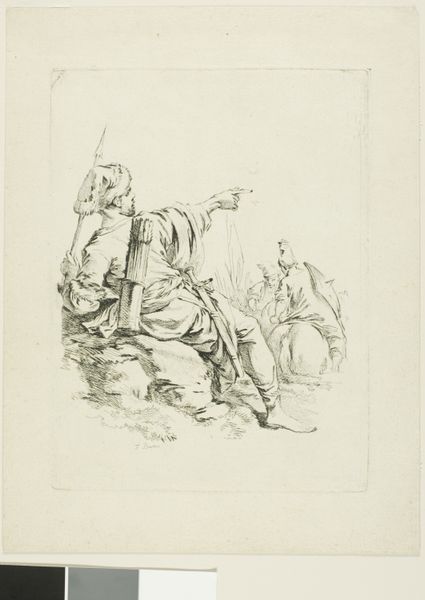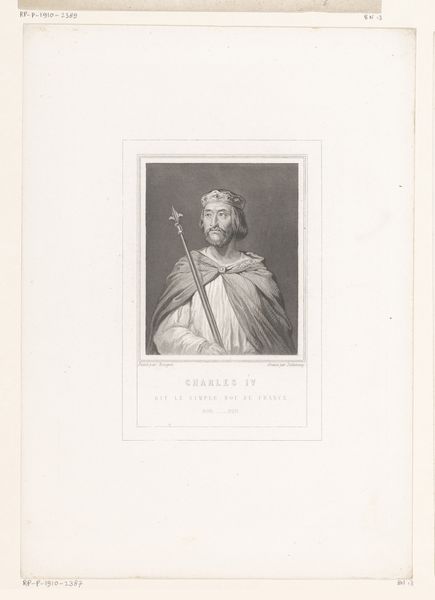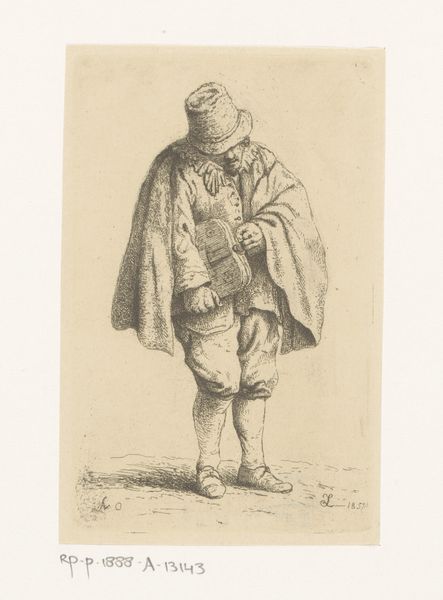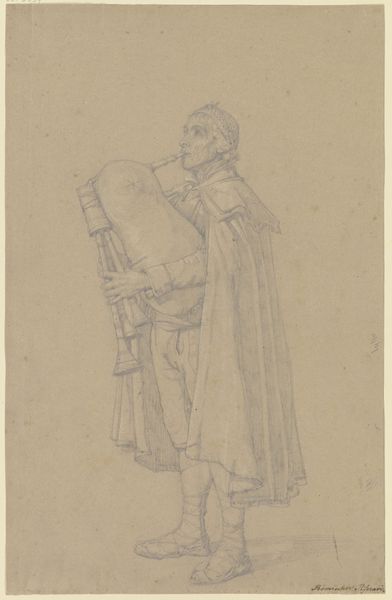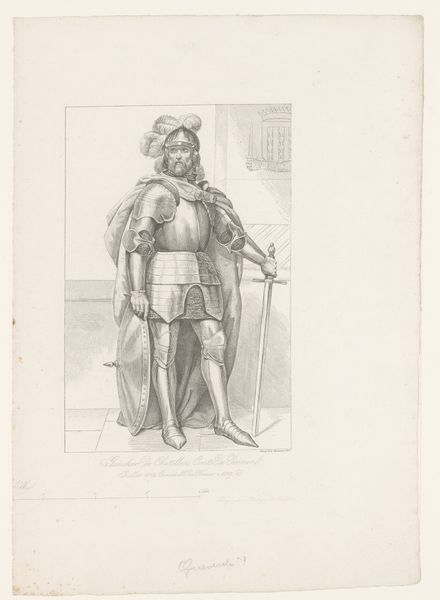
Dimensions: 303 mm (height) x 206 mm (width) (plademaal)
Editor: So, this is "Birger Jarl," a pencil drawing, likely a print as well, by Joel Ballin, made sometime between 1822 and 1885. The figure is standing but still manages to look rather imposing, almost monumental, even within the constraints of a pencil drawing. How do you read this image? Curator: I'm drawn to the symbolic weight Ballin invests in Birger Jarl, this semi-legendary Swedish statesman. He embodies a particular moment in the construction of national identity, doesn’t he? What signifiers does Ballin use to project that power? Editor: Well, there’s the helmet and the sword, clearly markers of authority and military strength. And his steady gaze gives an impression of confidence. Curator: Precisely! And notice the cape – a direct visual link to Roman emperors and the very *idea* of leadership inherited across centuries. It places Birger Jarl within a grand narrative. Why do you think artists choose historical figures? What purpose do they serve? Editor: I guess to remind us of the past, maybe? To make connections between then and now? Curator: Exactly. They aren't just illustrating history; they're actively shaping cultural memory. This romanticized image creates a heroic archetype, influencing how later generations understand their history. What feeling do you think people had looking at it at the time? Editor: Probably a feeling of national pride, seeing their history represented so heroically. Curator: Indeed. By visually associating Birger Jarl with enduring symbols of power, Ballin isn't just depicting a man; he’s crafting a potent myth. We carry on those traditions even now! Editor: I never thought about historical portraits as being quite *so* deliberate. It really shifts my perspective. Curator: Mine too, always. Every image, and every symbol, is there for a reason.
Comments
No comments
Be the first to comment and join the conversation on the ultimate creative platform.
